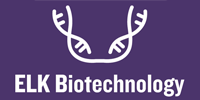


CD158b2/j rabbit pAb
Ref. EK-ES4137
| 50µl | 188,00 € | ||
| 100µl | 316,00 € |
Informations sur le produit
- KIR2DL3; CD158B2; KIRCL23; NKAT2; Killer cell immunoglobulin-like receptor 2DL3; CD158 antigen-like family member B2; KIR-023GB; Killer inhibitory receptor cl 2-3; MHC class I NK cell receptor; NKAT2a; NKAT2bNatural killer-associated transcript 2; NKAT-2; p58 natural killer cell receptor clone CL-6; p58 NK receptor CL-6; p58.2 MHC class-I-specific NK receptor; CD158b2; KIR2DS2; CD158J; NKAT5; Killer cell immunoglobulin-like receptor 2DS2;
Killer cell immunoglobulin-like receptors (KIRs) are transmembrane glycoproteins expressed by natural killer cells and subsets of T cells. The KIR genes are polymorphic and highly homologous and they are found in a cluster on chromosome 19q13.4 within the 1 Mb leukocyte receptor complex (LRC). The gene content of the KIR gene cluster varies among haplotypes, although several "framework" genes are found in all haplotypes (KIR3DL3, KIR3DP1, KIR3DL4, KIR3DL2). The KIR proteins are classified by the number of extracellular immunoglobulin domains (2D or 3D) and by whether they have a long (L) or short (S) cytoplasmic domain. KIR proteins with the long cytoplasmic domain transduce inhibitory signals upon ligand binding via an immune tyrosine-based inhibitory motif (ITIM), while KIR proteins with the short cytoplasmic domain lack the
Propriétés chimiques
Question d’ordre technique sur : EK-ES4137 CD158b2/j rabbit pAb
Si vous souhaitez demander un devis ou passer commande, veuillez plutôt ajouter les produits souhaités à votre panier, puis demander un devis ou passer commande à partir de votre panier. C'est une méthode plus rapide, plus économique, et vous pourrez bénéficier des remises disponibles ainsi que d'autres avantages


